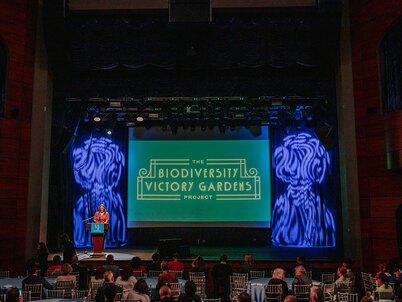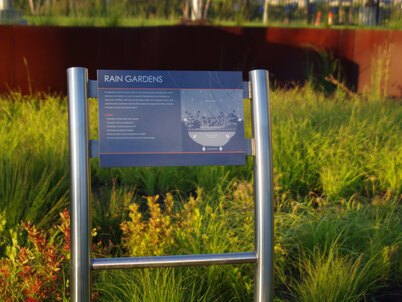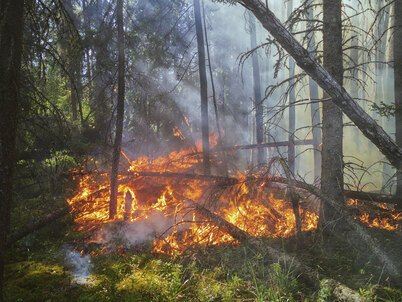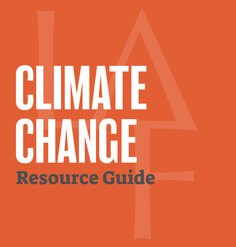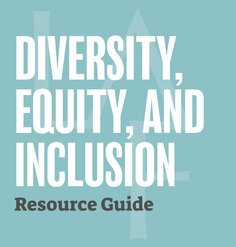Biodiversity Resource Guide
In the context of current unprecedented rates of species extinction, along with accelerating urbanization and inequity resulting in biodiversity loss, LAF has compiled resources to help you inform yourself, design, and advocate.
Designing to protect, support, and restore biodiversity is more important than ever for landscape architects and others who design and manage land. Definitions and general understanding of biodiversity across landscape architects and designers varies greatly. This article showcases how a series of international landscape architects interpret the term.
Our planet is seeing the effects of species loss among both plant and habitat life, which is influenced by rapid land use change and habitat destruction, exploitation of organisms for food and materials, pollution, invasive non-native species, and indirect drivers like a disconnect between people and nature. Although estimations of extinction rates vary widely, the planet is clearly losing species at a rapid rate. WWF reports a 69% average decline in populations of monitored species from 1970 to 2018 in its Living Planet Report, and it estimates current species loss rates as being between 1,000 and 10,00 times higher than the natural extinction rate.
Landscape solutions and the work of landscape architects can make a significant positive impact on biodiversity at a given project site; conversely, if biodiversity implications are ignored, our work can cause significant harm. In this Resource Guide, LAF has compiled a non-exhaustive list of key resources from LAF and beyond to help designers make positive impacts on biodiversity.
Hear from Leading Thinkers at Past LAF Events
LAF has provided a platform for high-level discourse on the importance of biodiversity through its ongoing programs like the Fellowship for Innovation and Leadership as well as LAF’s Research programs, along with special events like the 2016 Summit on Landscape Architecture and the Future. Below, view recorded presentations from leading thinkers about biodiversity topics.
Inform: Understand the Problem
Learn the science behind biodiversity. You don’t need to pursue a degree in landscape ecology, but you should be aware of basic principles like species diversity, genetic diversity, ecosystem and habitat diversity, and beyond. Gain or refresh your knowledge about the habitats in which you work. The resources below are selected to illustrate the larger context of biodiversity challenges and solutions – and how you might fit into them as a landscape architect or designer.
Convention on Biological Diversity
Several global bodies are working toward shared biodiversity goals. The United Nations Convention on Biological Diversity convenes nations on a regular basis to set goals and monitor progress for global biodiversity gains and losses. Its website provides the latest updates on targets and progress toward the Kunming-Montreal Global Biodiversity Framework to conserve at least 30% of lands, inland water, and oceans worldwide, along with other resources. The UN Decade on Ecosystem Restoration (2021-2030) offers a playbook and report with practical information and guidance for restoration of eight key ecosystem m types. Review regional strategies and action plans here. Familiarity with global frameworks and targets is recommended not just for policy buffs, but for anyone who wants to understand how their efforts can connect to and support larger national and international goals.
International Union for Conservation of Nature and Natural Resources
The IUCN is a large network of member government and civil society organizations focused on monitoring species and ecosystems and advocating for policy to protect and restore the natural world. Data from monitoring ecosystems is publicly available, and the IUCN also produces resources on topics including ecosystem assessment; biodiversity and health; ecosystem restoration; ecosystem management guidance for freshwater, invasive, and marine species; and species conservation science and action.
NatureServe
Another organization that collects, analyzes, and delivers biodiversity data and knowledge to inform conservation action, specifically in North America. It also hosts a network of over 60 governmental and non-governmental programs working to protect and conserve plants, animals, and ecosystems. These organizations and their resources are recommended for those interested in monitoring protocols and seeing a bigger picture.
Ecological Society of America
A key source for all things biodiversity, the ESA is the professional organization for ecological sciences. The Society publishes a series of journals with the latest biodiversity-related research and holds conferences to share findings, including open-source journals Ecosphere and the Bulletin of the Ecological Society of America. Exploring ESA’s content and engaging with others outside of the field of landscape architecture who have deep knowledge of ecological systems is highly recommended for all landscape architects. If this feels daunting, this article provides a compelling case for cross-disciplinary “translation” in the context of lawn conversion projects, and this case study showcases an example of how landscape architects and ecologists can collaborate.
Atlas for the End of the World
This in-depth and thoughtful collection of maps and infographics by Richard Weller, Claire Hoch, and Chieh Huang illustrates protected areas within Earth’s biodiversity hotspots alongside assessments of the cities that are most likely to collide with biodiversity-rich areas. This resource is recommended for map enthusiasts and those seeking a global perspective at scale.
Biodiversity in the Landscape Performance Series
From the design phase through post-construction, monitoring is a key tool in designing for and understanding a project’s impacts on biodiversity. Ongoing, species-specific monitoring may be out of scope or budget for some projects, but it should be pursued when feasible and appropriate – whether by the designer or by consultant experts. Where formal monitoring is not possible, more basic tools to evaluate biodiversity and case studies of comparable projects can offer support.
LAF's Landscape Performance Series (LPS) includes tools for measuring or estimating plant and animal biodiversity, like citizen science tools eBird or iNaturalist, along with calculators like the Floristic Quality Assessment Calculator. The LPS also includes a searchable database of over 200 exemplary built projects with quantified environmental, economic, and social benefits, many of which protect, enhance, or restore biodiversity through habitat and populations and species richness benefits, serving as models for future efforts. Both biodiversity design solutions and the methods used to evaluate biodiversity can be replicated in your work. Check out the featured projects below or explore the entire case study library on LandscapePerformance.org.
Design: Biodiversity at All Scales
Landscape architects should understand the presence (or lack thereof) and needs of the varied forms of life on their project sites as well as their wider ecological context. Research shows that connectivity, corridors, and landscape-scale natural infrastructure and conservation is needed to support many species. While landscape architects most often influence discrete sites or defined zones rather than the large expanses of land most necessary for significant biodiversity gains, designers can play a key role by examining larger landscape patterns and understanding how their individual site can contribute, even in highly urbanized contexts.
Americas Biodiversity Metric 1.0
This biodiversity quantification tool, developed by Ramboll and NatureServe, estimates biodiversity value of sites across the Americas. The first release is only focused on the Northeastern US, subsequent releases will expand to the Americas. Adapted from the UK’s Biodiversity Metric 4.0, the tool is in the form of an Excel spreadsheet and accompanying user guide that allows users to assign biodiversity values using habitat size, quality, conservation priority, and strategic significance. Though very new at the time this resource guide was released, this tool can be used by any designer seeking to more comprehensively estimate biodiversity net gain or loss on a project site. For more information on the UK Biodiversity metric, view this webinar.
Landscape Architecture Solutions to Biodiversity Loss
This guide, published by the American Society of Landscape Architects with research by Sohyun Park, Zahra Ali, and Pan Zhang is based on a review of nearly 70 peer-reviewed studies on planning and designing nature-based solutions to biodiversity loss. It includes actionable recommendations for designers that focus on heterogeneity and diversity.
Nature X Design
This fun-to-browse website includes articles, interviews, documentaries, case studies, and more content to inspire designers to incorporate biodiversity in creative as well as practical ways. The Biodiversity+ Design Toolkit contains broad principles and methods for expanding thinking around biodiversity. The website and tools are recommended for creative-minded designers that may be uncomfortable with the denser, scientific aspects of biodiversity and who are seeking a palatable introduction to biodiversity topics.
Ecology for Health
One way to talk to clients and communities about the importance of biodiversity is to showcase its connections to human health. This report by the San Francisco Estuary Institute provides planning-scale, site-scale, design detail, and management strategies for creating spaces that support biodiversity and human health. This approach is recommended for designers that work with public health-minded clients and communities seeking better health outcomes.
Sustainable SITES Initiative
SITES is a “rating system that guides, evaluates, and certifies sustainability and resilience in the design, development, and management of landscapes and other outdoor spaces.” SITES certification already includes several credits that aim to increase biodiversity, with more guidance forthcoming. SITES for biodiversity is recommended for those who already pursue SITES certification for their projects and those who seek structure and support for implementing biodiversity strategies.
Species- and Project-Specific Guidance
Biodiversity guidance is available from a number of diverse sources that focuses on target species or specific types of infrastructure. For example, Animal Road Crossing (ARC) offers guidance and resources for designing animal road crossings to ensure safe passage for humans and animals. Bird-Friendly Building Design from the American Bird Conservancy shares best practices for designing to eliminate mortality of birds in not only buildings, but their surrounding landscapes. Species- and project-specific resources are recommended for those who are passionate about and/or have a mandate from their clients or regulatory authorities to prioritize a specific species, genus, family, or class or who are pursuing specific interventions for which biodiversity guidance is available.
Additional Reading
The best biodiversity books effectively translate key ecology and ecological planning concepts for landscape architects. The Principles of Ecological Design by Travis Beck (2013) is a classic guide to ecological planting design and bringing ecological science into practice. Landscape Ecology Principles in Landscape Architecture and Land-Use Planning by Wenche Dramstad, James Olson, and Richard Forman (1996), remains a foundational resource in understanding the complex principles of landscape ecology by covering basic concepts like patches, edges and boundaries, corridors and connectivity, and mosaics. LAF published Biodiversity Planning and Design: Sustainable Practices by Jack Ahern, Elizabeth Leduc, and Mary Lee York (2007), which covers key biodiversity concepts for landscape architects and real-world case studies. While some of these books are not exactly current, and our shared understanding of some concepts has evolved over time, their basic principles remain valid and essential for those seeking a foundational understanding of biodiversity in designed landscapes.
Climate & Biodiversity: Intertwined Crises
Biodiversity is closely tied to climate change, as described the International Federation of Landscape Architects’ (IFLA) Climate and Biodiversity Loss Emergency declared in 2019. Many of the strategies to combat climate change with mitigation and adaptation also support biodiversity, and it could be argued that “solving” for biodiversity would also mostly address the climate crisis as well. By working to support biodiversity, many climate goals can also be achieved. Dive into LAF and ASLA’s resources on climate change below.
Advocate: Get Involved
Partner, Partner, Partner
Landscape architects and others who manage the land, while trained in environmental and social systems, may not receive in-depth training in ecology and biodiversity. We are uniquely trained and positioned to serve as connectors to “translate” between disciplines to promote strong design and biodiversity outcomes.
Firms Taking Action
Some leading landscape architecture firms are putting intense focus on biodiversity within their projects. In Landscape Journal, Sasaki’s Allyson Mendenhall describes how Sasaki is integrating ecological principles throughout their interdisciplinary firm by hiring ecologist-designers and anchoring design in science-based decisions.
Engage
Landscape architecture capacity organizations (including LAF, ASLA, CELA, IFLA, CSLA, and others) have begun to prioritize biodiversity, following close on the heels of significant commitments to advance climate and equity issues. The International Federation of Landscape Architects’ (IFLA) declared a Climate and Biodiversity Loss Emergency in 2019, and the American Society of Landscape Architects (ASLA) has urged greater action on the biodiversity crisis and maintains a policy statement on biodiversity. The Australian Institute of Landscape Architects has also issued a statement and a “biodiversity positive design” working group. Joining these groups’ existing efforts is a great way to contribute to the biodiversity movement.
Connect
There are several networks that focus on connecting designers and built environment professionals more broadly around biodiversity topics. For example, the Urban Biodiversity and Design (URBIO) network fosters scientific exchange and organizes events to provide opportunities for knowledge-sharing in promotion of the UN Convention on Biological Diversity in urban areas. The Network for Engineering with Nature also provides resources with a cross-disciplinary focus.
Funding
There are unique opportunities available to communities, and the landscape architects that work with them, to support biodiversity through federal, state, and other grants. For example, the National Parks Service’s Rivers, Trails, and Conservation Assistance program supports locally-led conservation and outdoor recreation programs.
